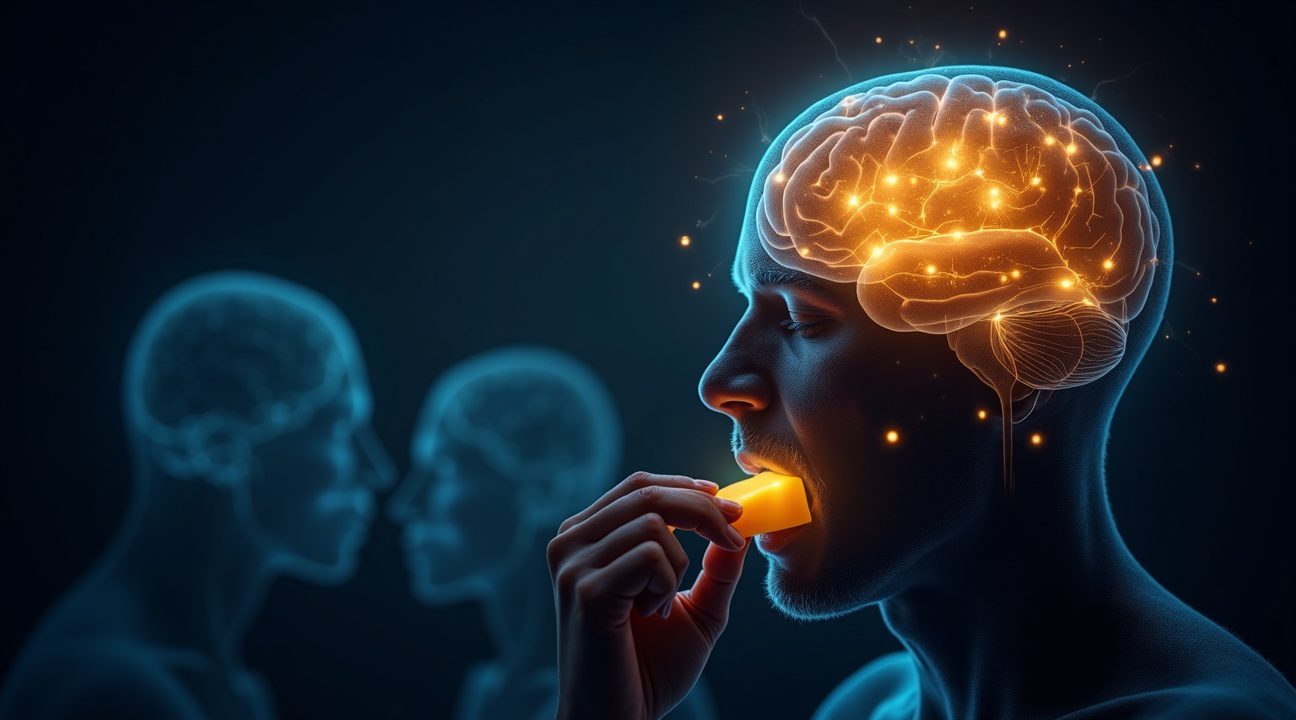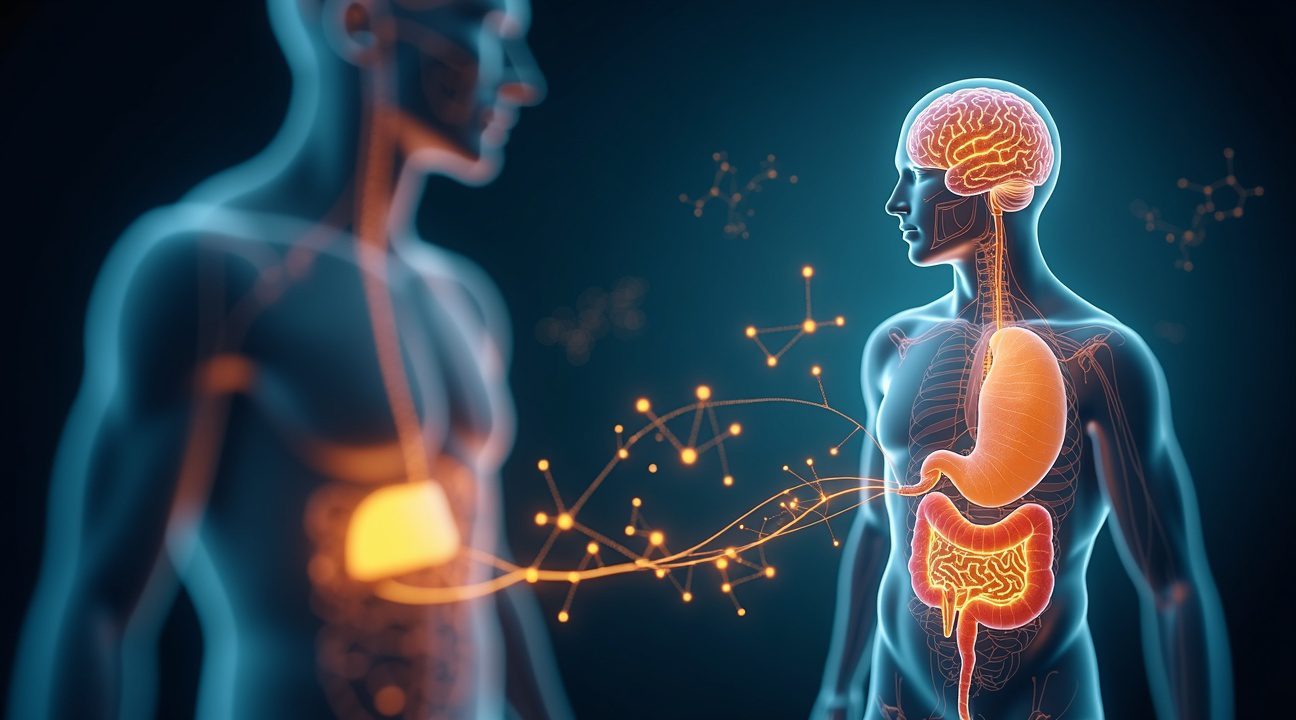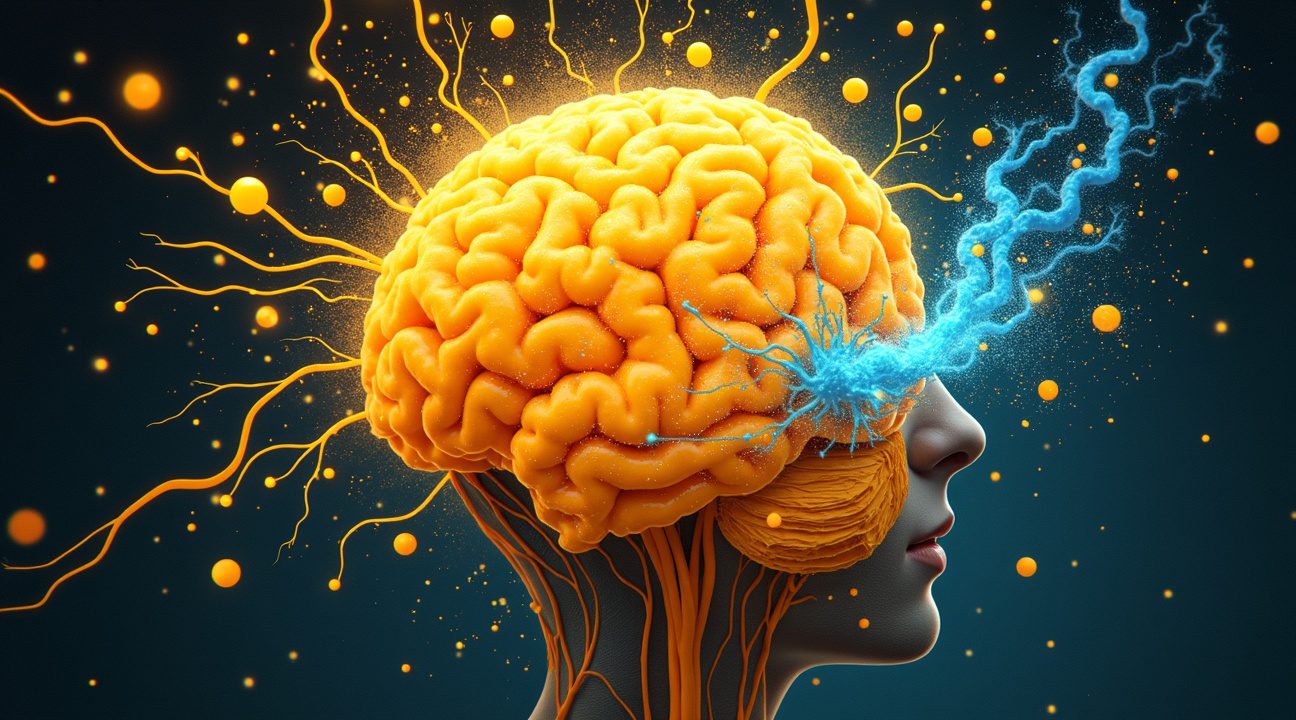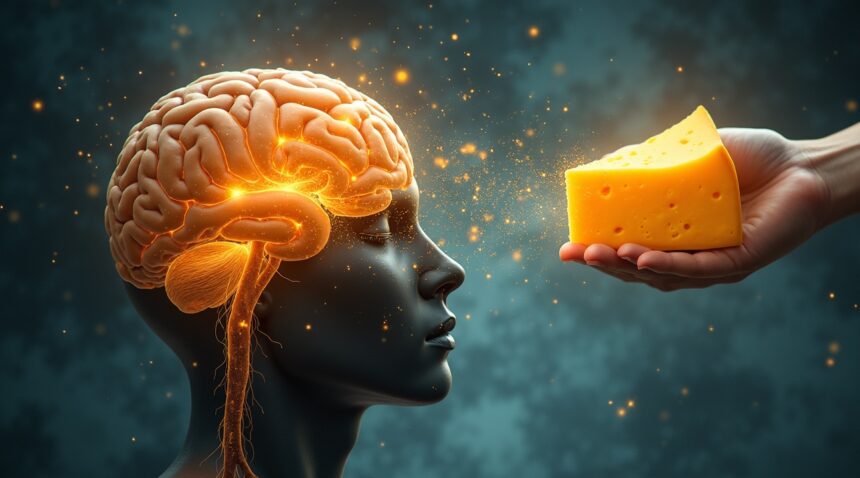Functional MRI studies show that cheese consumption activates the same brain reward circuits linked to mild drug addiction.
Neurological Effects of Cheese Consumption
Researchers using functional MRI technology have discovered that eating cheese stimulates areas of the brain involved in processing pleasure and motivation. Specific regions such as the ventral pallidum and basal ganglia show heightened activity, indicating that the brain’s reward system is being engaged in a manner similar to the effects of addictive substances.
Role of Casomorphins
The brain’s response to cheese is primarily due to a group of compounds called casomorphins. These are derived from casein proteins naturally present in cheese. During digestion, casein breaks down into these casomorphins, which can bind to the brain’s opioid receptors and lead to feelings of pleasure, relaxation, or even mild euphoria. This reaction prompts the release of dopamine, a neurotransmitter closely tied to reward and addictive behavior.
Key Takeaways
- Cheese activates brain reward pathways identical to those triggered by mild drugs, particularly in the ventral pallidum, globus pallidus, and substantia nigra regions.
- Casein proteins break down into casomorphins, which are opioid-like compounds that can bind to brain receptors and create addiction-like responses.
- Cheese consumption behavior mirrors drug dependence: individuals may experience strong cravings, difficulty moderating intake, and withdrawal-like symptoms when eliminating cheese.
- The unique combination of fat, salt, and casein proteins makes cheese a “hyperpalatable” food that can override normal satiety signals and reinforce overconsumption.
- Recognizing the addictive potential of cheese could inform new treatments for obesity and food addiction, potentially using approaches borrowed from substance abuse recovery such as trigger management and behavioral coaching.
For more detailed reading, you can visit this scientific article on cheese and addiction, which explains the underlying biochemistry and neurology.
How Cheese Hijacks Your Brain’s Reward System Like Mild Drugs
Functional MRI studies expose a fascinating connection between cheese consumption and brain reward circuits that mirror drug-related pleasure responses. I’ve examined research showing that when people eat cheese, their brains light up in areas traditionally associated with addiction and reward processing, particularly within the basal ganglia region.
The brain’s response to cheese activates several critical structures involved in pleasure and motivation. These include the ventral pallidum (VP), globus pallidus (GPi/GPe), and substantia nigra (SN) — the same neural networks that respond to various substances. Scientists have discovered that cheese triggers these reward pathways in ways that explain why many people find it so irresistible and why some describe feeling almost addicted to dairy products.
The Ventral Pallidum Connection
The ventral pallidum serves as a core structure in brain incentive-motivation, acting like a neural command center for pleasure and desire. Research reveals that this region shows significantly less activation in individuals who feel disgusted by cheese, suggesting a direct correlation between VP activity and cheese preference. This finding supports the theory that our brain’s reward system determines not just how much we enjoy cheese, but whether we find it appealing at all.
Scientists have identified key activation overlap between cheese consumption and certain drugs in regions responsible for both food pleasure and addiction responses. This overlap occurs in areas that process reward and aversion, creating a neural pathway that explains why cheese can feel so satisfying and why some people struggle to limit their consumption. The globus pallidus and substantia nigra, typically associated with movement control, also play crucial roles in processing these reward signals.
The research demonstrates that cheese doesn’t just satisfy hunger — it actively engages the same brain circuits that respond to addictive substances. This neurological response helps explain why scientists find cheese consumption patterns often mirror addictive behaviors, with people craving specific types and struggling to moderate intake despite health concerns.
These findings suggest that the brain treats cheese consumption as more than simple nutrition. The activation patterns reveal a complex neurochemical response that involves dopamine release and reward reinforcement, similar to what occurs with mild drugs. Understanding this connection provides insight into why cheese holds such a prominent place in many cuisines and why dietary changes involving cheese elimination often prove challenging for individuals attempting healthier eating patterns.

The Science Behind Cheese Addiction: Casein and Casomorphins
I find the biochemical pathway behind cheese addiction fascinates researchers studying food cravings. Casein, the primary protein in dairy products, undergoes a remarkable transformation during digestion that produces compounds with drug-like properties. When someone consumes cheese, digestive enzymes break down casein into smaller fragments called casomorphins—peptides that share structural similarities with opioid compounds.
How Casomorphins Function in the Brain
These casein-derived casomorphins possess the ability to bind to the brain’s opioid receptors, creating effects similar to how opiates function in neural tissue. This binding mechanism reinforces feeding behavior by activating pleasure and reward pathways. The interaction triggers dopamine release in areas associated with satisfaction and craving, potentially explaining why people often struggle to moderate their cheese consumption.
Scientists have experimentally detected casomorphins in brain tissue samples, particularly in studies involving infants fed casein-based formulas. This discovery proves these opioid peptides can bypass the body’s normal metabolic barriers and reach neural tissue directly. Scientists find that the presence of these compounds in brain tissue suggests they cross the blood-brain barrier more effectively than previously understood.
The Blood-Brain Barrier Debate
I notice ongoing scientific debate about exactly how casomorphins exert their influence. Some neuroscientists argue these compounds cross the blood-brain barrier and activate opioid circuits directly in the brain. Their research suggests casomorphins can reach concentrations sufficient to trigger measurable neurological responses. Research continues to explore the precise mechanisms involved.
However, other researchers believe casomorphins primarily affect the peripheral nervous system, particularly receptors in the digestive tract. They propose that signals from the gut communicate with the brain through the vagus nerve, creating indirect effects on appetite and mood regulation. This peripheral action could still influence food cravings and consumption patterns without direct brain penetration.
The scientific community recognizes this question requires additional investigation. Recent studies continue examining how these peptides move through the body and interact with various receptor systems. Understanding whether casomorphins act directly on brain tissue or through peripheral mechanisms will help clarify their role in food addiction patterns.

Behavioral Signs That Point to Cheese’s Addictive Potential
I observe three primary behavioral patterns that mirror drug dependence research when examining cheese consumption habits. Strong cravings represent the first indicator, where individuals experience intense urges for specific cheese varieties despite knowing they’ll exceed their intended portions. Difficulty moderating intake follows as the second pattern, with many people reporting an inability to stop at just one slice or piece. The third pattern involves reinforcing properties that drive repeated consumption, creating cycles where cheese eating leads to more cheese eating.
Chemical Composition Drives Reward Responses
Foods high in fat and salt like cheese function as especially potent stimulators of reward circuitry in the brain. This activation occurs separately from any psychoactive effects that casomorphins might produce. I find that cheese’s unique combination of concentrated fats, sodium, and proteins creates what researchers call a “hyperpalatable” food profile. These characteristics trigger dopamine releases that reinforce eating behaviors, similar to how scientific discoveries reveal unexpected neural pathways in marine life studies.
The fat content in cheese provides immediate satisfaction while salt enhances flavor perception, creating a powerful one-two combination. Casein proteins break down into casomorphins during digestion, adding another layer of neurochemical activity. When these elements work together, they can overwhelm normal satiety signals, leading people to consume far more than they initially planned.
Research Reveals Unique Population Responses
A notable proportion of people, particularly in surveyed French populations, report feeling disgusted by cheese, making it uniquely positioned for controlled studies of food-related brain activation patterns. This disgust response provides researchers with clear control groups to compare against cheese enthusiasts. Studies comparing these populations show distinct neural firing patterns when exposed to cheese aromas and visual cues.
Gaming communities have shown similar response patterns when examining behavioral triggers in digital environments. The entertainment industry has also documented comparable addiction-like responses, as seen in franchise development and sports gaming patterns.
While cheese displays addictive-like qualities due to its chemical composition and neural effects, not all scientists agree on the extent of its impact versus social or evolutionary factors. Some researchers argue that cultural conditioning and evolutionary preferences for calorie-dense foods play larger roles than any inherent addictive properties. Others point to innovative developments in transportation technology and cultural practices like stadium cleaning rituals as examples of how human behaviors can’t always be reduced to simple chemical explanations.

How Cheese Compares to Other Addictive Substances and Foods
The brain’s response to cheese shares remarkable similarities with mild addictive substances like nicotine and alcohol. I find this fascinating because these substances all target the same neural pathways — specifically the dopamine and opioid systems that control pleasure and reward. When someone consumes cheese, their brain activates the same opioid reward circuits and basal ganglia pathways that respond to these mild drugs.
What sets cheese apart from typical comfort foods is its unique biochemical mechanism. Most rewarding foods depend heavily on sugar and fat combinations to trigger brain activation. Think about how a chocolate bar or french fries create their appeal through this classic pairing. Cheese operates differently thanks to its casein content, which breaks down into casomorphin compounds during digestion. These casomorphins create distinct opioid-based reward responses that don’t rely solely on the traditional sugar-fat combination.
This difference becomes clearer when examining addiction patterns. People who develop problematic relationships with cheese often display the classic signs of substance dependence. They experience cravings that feel almost compulsive, develop tolerance requiring larger amounts to achieve satisfaction, derive significant pleasure from consumption, and even report mild withdrawal symptoms when they attempt to eliminate cheese from their diet. These patterns mirror what addiction specialists observe with mild addictive drugs rather than simple food preferences.
Recognition and Treatment Approaches
The similarities between cheese consumption patterns and mild drug addiction have prompted some experts to reconsider treatment strategies. Traditional addiction interventions focus on several key approaches that could apply to problematic cheese consumption:
- Cue-avoidance techniques help individuals identify and eliminate environmental triggers
- Behavioral therapy addresses the psychological components of craving and consumption patterns
- Gradual reduction protocols prevent severe withdrawal while building new habits
- Support systems provide accountability and encouragement during difficult periods
- Mindfulness practices increase awareness of consumption triggers and emotional states
These strategies acknowledge that cheese addiction operates through similar neurological mechanisms as other addictive substances. I’ve observed that people struggling with cheese overconsumption often benefit from approaches typically reserved for substance abuse treatment. The brain doesn’t distinguish between the source of opioid activation — whether it comes from casomorphins in aged cheddar or compounds in prescription medications.
Understanding these parallels helps explain why some individuals find it exceptionally difficult to moderate their cheese intake despite health concerns or weight management goals. Their brains have developed the same reward dependencies that characterize mild drug addiction. This isn’t a matter of willpower or moral failing; it’s a physiological response to compounds that directly activate pleasure centers.
The implications extend beyond individual treatment approaches. Food manufacturers have long understood that certain combinations create highly palatable products, but the specific opioid activation from cheese adds another dimension to food engineering. Products that combine cheese with other reward-triggering ingredients can create particularly powerful consumption drives.
Research into deep-sea discoveries has shown how extreme environments can reveal unexpected biological mechanisms, much like how studying cheese addiction reveals unexpected similarities to drug dependency patterns. Both discoveries challenge our assumptions about familiar systems.
For individuals concerned about their cheese consumption, recognizing these neurological similarities provides valuable insight. The same strategies that help people overcome mild drug dependencies — identifying triggers, creating new habits, and seeking professional support when needed — can effectively address problematic cheese consumption. The brain’s plasticity allows for rewiring these reward pathways through consistent intervention and alternative behavior patterns.
What This Means for Public Health and Treatment Approaches
The revelation that cheese activates brain reward pathways similar to those triggered by mild drugs opens new avenues for addressing obesity and problematic eating behaviors. Public health officials can’t simply tell people to “eat less cheese” anymore — they need strategies that account for the neurological pull these foods create.
Rethinking Treatment Strategies
Clinical approaches for food addiction may need to borrow heavily from established substance abuse treatment protocols. Traditional weight loss programs often fail because they don’t address the addictive properties of certain foods. There is potential in applying cue management techniques, where patients learn to identify and avoid environmental triggers that prompt cheese cravings. Behavioral modification programs could incorporate elements like gradual exposure reduction and substitute reward training, similar to methods used for drug addiction recovery.
Healthcare providers might also consider screening for food addiction patterns during routine obesity assessments. Patients who show strong neural responses to cheese and other processed foods could benefit from specialized intervention programs rather than standard dietary counseling.
Broader Implications for Food Policy
Understanding cheese’s addictive potential could reshape how we approach food regulation and marketing restrictions. Just as cigarette advertisements face strict controls, foods that trigger addiction-like brain responses might warrant similar oversight. There are parallels between how cultural behaviors influence health outcomes and how food marketing shapes consumption patterns.
Public health campaigns could shift from promoting willpower-based approaches to acknowledging the biological reality of food addiction. Educational programs might teach people to recognize when they’re experiencing genuine hunger versus reward-driven cravings triggered by cheese consumption.
The research also highlights why obesity treatments often fail when they ignore the neurochemical aspects of overeating. People struggling with weight management aren’t simply lacking self-control — they may be fighting against brain chemistry that’s been hijacked by processed dairy products and other hyperpalatable foods.
However, experts emphasize caution in drawing direct comparisons between cheese consumption and drug addiction. More research is needed to determine how frequently cheese consumption actually leads to addiction-like patterns compared to other foods or substances. The intensity and duration of neural activation may differ significantly from traditional drugs of abuse.
Moving forward, successful obesity interventions will likely combine nutritional education with addiction treatment principles, acknowledging that some foods create genuine physiological dependence that requires specialized therapeutic approaches.
Sources:
National Center for Biotechnology Information (PMC5065955, PMC4712268)
Mount Sinai – “Study Reveals That Cheese Triggers the Same Part of the Brain as Many Drugs”
NeuWriteSD – “Say Cheese: The Neuroscience of Our Devotion to Dairy”


